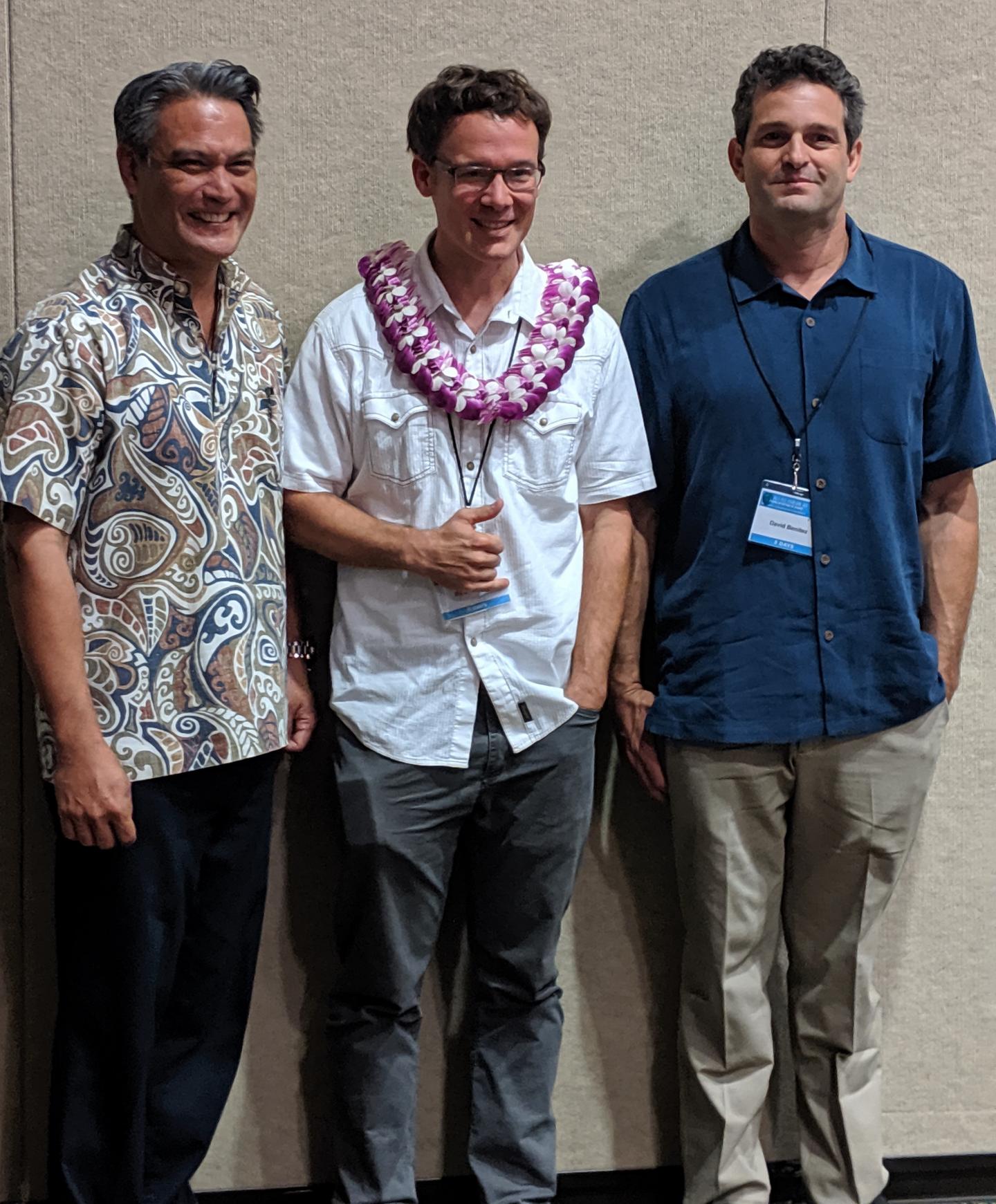
Credit: DANNY DUDA / UH HILO
Hawaii National Park, HI – An innovative strategy to use unmanned aircraft systems (UAS) and remote sensing devices to detect a fungus decimating Hawaiian forests has earned Dr. Ryan Perroy of the University of Hawai’i at Hilo (UHH) the $70,000 ‘Ohi’a Challenge prize.
Since 2014 when it was first discovered, Rapid ‘Ohi’a Death (ROD), has killed hundreds of thousands of mature ‘Ohi’a trees (Metrosideros polymorpha) on Hawai’i Island and was recently detected on Kaua’i and Maui. ROD is caused by two invasive fungi, Ceratocystis huliohia and Ceratocystis lukuohia, that if left unstopped, could irreversibly change Hawaiian ecosystems and cultural traditions by eliminating the keystone native tree in Hawaiian forests.
Dr. Perroy is an associate professor at UHH, and principle investigator with the Spatial Data Analysis & Visualization (SDAV) lab, a research unit applying geospatial tools to local environmental problems in Hawai’i and the Pacific region. Dr. Perroy’s solution uses high-resolution cameras and other sensors to improve early detection of ROD across forests, including areas where signs of ROD may not yet be visible to the naked eye. This solution will buy managers precious time to respond to outbreaks, and will give scientists better information on how the disease spreads.
A second component to his solution is to use a drone to collect samples from the canopy of suspect trees for laboratory analysis, thus increasing the chances of detecting the fungus and saving time and effort of crews sampling on the ground in often challenging environments.
“The best answers to problems are not always the ones we think up on our own,” said Susan Combs, U.S. Department of the Interior Assistant Secretary for Policy, Management, and Budget. “We need innovative solutions like Dr. Perroy’s submission to help us nurture the land for the next generations. Collaborative conservation is an important tool for successfully fulfilling our responsibilities to protect our nation’s forests, watersheds and other natural resources,” she said.
Conservation X Labs, the U.S. Department of the Interior’s Office of Native Hawaiian Relations, the National Invasive Species Council Secretariat, and the National Park Service partnered on the ‘Ohi’a Challenge to identify novel technological solutions to ROD. The $70,000 challenge was offered to create innovative and low-cost solutions to detect the invasion pathways and the spread of ROD-causing fungi in the environment. Fifty-six applications were received from solvers across multiple U.S. states as well as from European and African countries.
“The ecological and cultural importance of ‘Ohi’a cannot be overstated. We were encouraged by the many high-quality submissions we received for this challenge, and by the support and interest it generated in Hawai’i and around the world,” said Hawai’i Volcanoes National Park Ecologist David Benitez, who announced Perroy’s prize at the Hawai’i Conservation Conference in Honolulu on July 10th.
“Innovative solutions such as Dr. Perroy’s are a key to stopping the spread of ROD and saving our cherished ‘Ohi’a for future generations,” Benitez said.
In addition, the founder CEO and founder of Conservation X Labs praised Dr. Perroy’s innovative solution:
“We believe that exponential technologies and novel innovations are necessary to turn the tide on the growing rate of biodiversity loss. Open innovation competitions like The ‘Ohi’a Challenge provide an opportunity to source and scale such transformative solutions,” said Alex Dehgan, CEO and co-founder of Conservation X Labs. “Dr. Perroy’s solution deploying multi-spectral imaging to detect asymptomatic trees at a landscape level has the potential to help save ‘Ohi’a from extinction. Not only could his work tackle a critical problem in Hawai’i but it could also yield incredible new developments in tracking fungal pathogens that threaten vital plant and agricultural species globally,” Dehgan said.
In addition to Dr. Perroy’s winning solution, two non-monetary Honorable Mentions were awarded. Lauralea Oliver, with K9inSCENTive, LLC, for her proposal to use trained dogs and handlers to detect ROD, and Miguel Castrence, with Resource Mapping Hawai’i, for his proposal to use fixed wing airplanes and high-resolution sensors to map ROD across large areas.
###
Media Contact
David Benitez
[email protected]
Original Source
https:/



